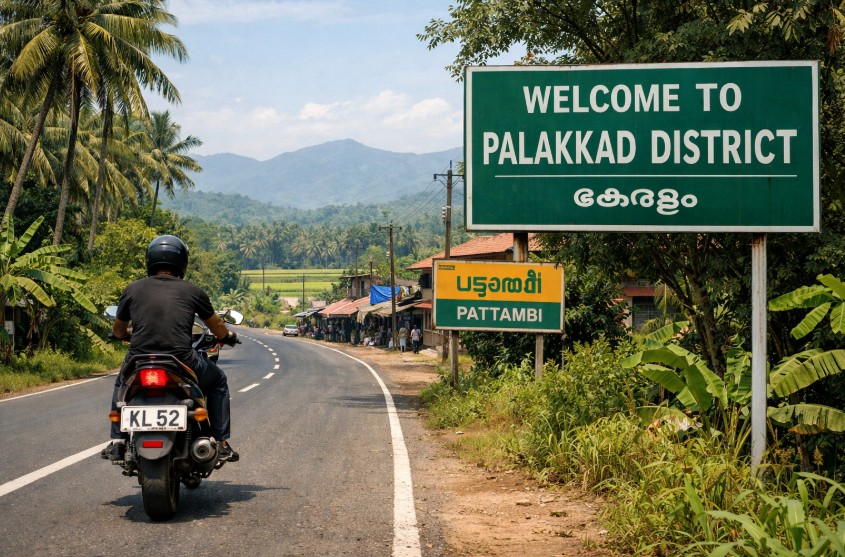Table of Contents
ToggleWelcome to Agra, a city steeped in history and filled with mesmerizing attractions. Whether you’re a history enthusiast, an architecture lover, or simply looking for famous tourist spots, Agra has something for everyone. From the world-renowned Taj Mahal to the majestic Agra Fort, this city is a treasure trove of cultural heritage and iconic landmarks.
Discover the must-visit places in Agra that will leave you awe-inspired. Explore its historical sites, soak in the grandeur of Mughal architecture, and immerse yourself in the rich cultural tapestry of this remarkable city. Whether it’s wandering through the ancient streets, visiting popular landmarks, or indulging in the best tourist spots, Agra promises an unforgettable experience.
Top Places to Visit in Agra
1. Taj Mahal
The Taj Mahal, an architectural masterpiece, is the crown jewel of Agra. This iconic monument of love, built by Emperor Shah Jahan in memory of his beloved wife Mumtaz Mahal, is a symbol of eternal love and grace. It is a UNESCO World Heritage Site and showcases the finest examples of Mughal architecture. The intricately carved marble, the beautiful gardens, and the symmetrical design make it a must-visit attraction in Agra.

Map:
2. Agra Fort
Agra Fort, also known as the Red Fort of Agra, is a majestic fortress that showcases the grandeur of Mughal architecture. Built by Emperor Akbar, this historical monument served as the royal residence for successive Mughal emperors. Its impressive red sandstone walls and intricate palaces offer a glimpse into the rich history and architectural brilliance of the Mughal era. Agra Fort is a UNESCO World Heritage Site and should not be missed when visiting Agra.

Agra Fort, located on the banks of the Yamuna River, played a significant role in the Mughal Empire. Its strategic location, fortified walls, and imposing gates made it a formidable stronghold. The fort, spreading over an area of 94 acres, consists of various structures, including the Jahangiri Mahal, Diwan-i-Khas, Diwan-i-Aam, and the Khas Mahal.
The Jahangiri Mahal, also known as the Palace of Jahangir, is a stunning example of Mughal architecture. Its intricate stone carvings, arched balconies, and delicately designed facades highlight the craftsmanship of that era.
The Diwan-i-Khas, or the Hall of Private Audience, is a marble pavilion known for its remarkable acoustics. It is here that the emperor held private meetings and discussions.
The Diwan-i-Aam, or the Hall of Public Audience, is an impressive structure with a beautifully ornamented throne for the emperor. This hall was where the emperor would meet his subjects and address public gatherings.
The Khas Mahal, a private palace built for the emperor’s personal use, showcases the opulence and luxury enjoyed by the Mughal rulers. Its elegant architecture, intricate designs, and use of marble make it a sight to behold.
Visiting Agra Fort provides a fascinating glimpse into the Mughal era and allows visitors to immerse themselves in the rich history and architectural marvels of that time. The fort’s commanding presence, intricate detailing, and captivating stories make it a must-visit destination for history enthusiasts and architecture lovers alike.
Map:
Key Features of Agra Fort
| Feature | Description |
|---|---|
| Location | On the banks of the Yamuna River in Agra |
| Construction | Built by Emperor Akbar in the 16th century |
| Architecture | Blend of red sandstone and marble in Mughal style |
| Size | Spread over an area of 94 acres |
| Significance | Royal residence and strategic fortress during the Mughal Empire |
| UNESCO World Heritage Site | Listed as a World Heritage Site since 1983 |
3. Fatehpur Sikri
Located near Agra, Fatehpur Sikri is an architectural marvel that showcases the grandeur of Mughal architecture and the opulent lifestyle of the Mughals. This historical complex, built by Emperor Akbar in the 16th century, was once the capital of the Mughal Empire but was eventually abandoned. Today, it stands as a UNESCO World Heritage Site, offering visitors a glimpse into the glorious past of Indian history.

Map:
Mughal Architecture and Abandoned City
Fatehpur Sikri is renowned for its stunning Mughal architecture, characterized by intricate carvings, beautiful arches, and expansive courtyards. The structures within the complex blend Persian, Islamic, and Hindu architectural styles, creating a unique fusion that symbolizes the Mughal era. Despite its architectural brilliance, Fatehpur Sikri was abandoned due to water scarcity, making it a captivating reminder of a once-thriving city frozen in time.
4. Major Attractions: Buland Darwaza
One of the major attractions of Fatehpur Sikri is the magnificent Buland Darwaza, a massive gateway that stands tall at an impressive height of 54 meters. Built to commemorate Akbar’s victory over Gujarat, the Buland Darwaza is a stunning example of Mughal craftsmanship. Its intricate carvings, elegant arches, and imposing presence leave visitors awestruck, making it a must-see landmark within the historical complex.
| Attractions | Description |
|---|---|
| Jama Masjid | A grand mosque within the complex, adorned with delicate marble work and exquisite calligraphy. |
| Diwan-i-Khas | An ornate hall where the emperor held private meetings and receptions. |
| Panch Mahal | A five-story pavilion with 176 columns, displaying exceptional architectural beauty. |
| Tomb of Salim Chishti | A white marble mausoleum of the revered Sufi saint, attracting devotees from around the world. |
Map:
5. Akbar’s Tomb
Akbar’s Tomb, located in Sikandra, is the final resting place of Emperor Akbar, one of the greatest Mughal rulers. This magnificent mausoleum showcases the architectural brilliance of the Mughal era. Built with a blend of red sandstone and marble, it stands as a symbol of Akbar’s impeccable taste and artistic vision.
The tomb is surrounded by beautiful gardens, adding to its serene ambiance. A visit to Akbar’s Tomb is a journey into the glorious past of the Mughal Empire.
Map:
6. Jama Masjid
Explore the grandeur of Mughal architecture at Jama Masjid, Agra’s largest mosque. Built by Emperor Shah Jahan, this magnificent structure is not only a place of worship but also a significant religious site in the city.
Constructed with exquisite red sandstone and adorned with intricate designs in white marble, Jama Masjid is a sight to behold. As you enter the mosque, the soaring domes and towering minarets captivate your attention, reflecting the rich cultural heritage of Agra.
Experience a spiritual journey as you walk through the spacious courtyard and marvel at the architectural brilliance displayed in every detail. The harmonious blend of red sandstone and white marble creates a visually stunning contrast, exemplifying the beauty of Mughal craftsmanship.
Take a moment to cherish the serene ambiance of Jama Masjid, where worshippers come to seek solace and connect with their faith. The tranquil atmosphere invites introspection and reflection, providing a respite from the bustling city.
Whether you have a deep appreciation for Mughal architecture or simply wish to immerse yourself in the religious significance of the mosque, a visit to Jama Masjid is an experience that should not be missed. Witness the architectural masterpiece that stands as a testament to Agra’s rich cultural heritage and offers a glimpse into the grandeur of the Mughal era.

Map:
Conclusion
Agra, with its must-see attractions and historical sites, is a city that beautifully showcases India’s rich cultural heritage. Home to iconic landmarks like the Taj Mahal, Agra Fort, Fatehpur Sikri, Akbar’s Tomb, and Jama Masjid, this city offers a mesmerizing journey into the opulence of the Mughal era.
When you visit Agra, you will be captivated by the architectural marvels and intricate designs of these historical monuments. The Taj Mahal, a symbol of eternal love, stands as a testament to the artistic brilliance of Mughal architecture. Agra Fort, with its impressive red sandstone walls, allows you to envision the grandeur of the Mughal emperors.
Exploring Fatehpur Sikri, an abandoned city filled with Mughal splendor, and paying homage at Akbar’s Tomb, a magnificent mausoleum, add further depth to the experience. Jama Masjid, the largest mosque in Agra, is a spiritual haven that showcases the rich cultural heritage of the city.
Agra is truly a destination that will leave you awe-inspired. Whether you are a history enthusiast, an architecture lover, or seeking spiritual enlightenment, these top attractions in Agra offer a perfect blend of cultural significance and timeless charm. Plan your trip to Agra and immerse yourself in the captivating beauty of this city’s historical sites and cultural heritage. From marveling at the majestic Taj Mahal to exploring the grandeur of Agra Fort and experiencing the vibrant local markets, there are countless things to do in Agra that will make your visit unforgettable.
FAQ
1. What are the top places to visit in Agra?
The top places to visit in Agra include the Taj Mahal, Agra Fort, Fatehpur Sikri, Akbar’s Tomb, and Jama Masjid.
2. What is the Taj Mahal?
The Taj Mahal is an iconic monument in Agra, India. It is a mausoleum built by Emperor Shah Jahan in memory of his wife Mumtaz Mahal. It is a UNESCO World Heritage Site and showcases the finest examples of Mughal architecture.
3. What is Agra Fort?
Agra Fort, also known as the Red Fort of Agra, is a majestic fortress in Agra. It served as the royal residence for successive Mughal emperors. Agra Fort is a historical monument with impressive red sandstone walls and intricate palaces, offering a glimpse into the rich history and architectural brilliance of the Mughal era. It is a UNESCO World Heritage Site.
4. What is Fatehpur Sikri?
Fatehpur Sikri is a historical complex near Agra. It was once the capital of the Mughal Empire but was later abandoned. Fatehpur Sikri is a UNESCO World Heritage Site and showcases the grandeur of the Mughal era. The Buland Darwaza, a massive gateway, is one of its major attractions.
5. What is Akbar’s Tomb?
Akbar’s Tomb is the final resting place of Emperor Akbar, one of the greatest Mughal rulers. It is a magnificent mausoleum located in Sikandra, near Agra. The tomb showcases the architectural brilliance of the Mughal era, with a blend of red sandstone and marble. It is surrounded by beautiful gardens, adding to its serene ambiance.
6. What is Jama Masjid?
Jama Masjid is the largest mosque in Agra. Built by Emperor Shah Jahan, it is a magnificent structure showcasing the grandeur of Mughal architecture. Constructed with red sandstone and detailed designs in white marble, Jama Masjid is a significant religious site and a reflection of the rich cultural heritage of Agra.
7. Why is Agra a must-visit destination?
Agra is a city that encapsulates the essence of India’s rich cultural heritage and history. With iconic attractions like the Taj Mahal, Agra Fort, and Fatehpur Sikri, it offers a glimpse into the opulence of the Mughal era. These historical monuments, with their intricate designs and serene ambiance, make Agra a must-visit destination for history buffs, architecture enthusiasts, and those seeking spiritual enlightenment.










